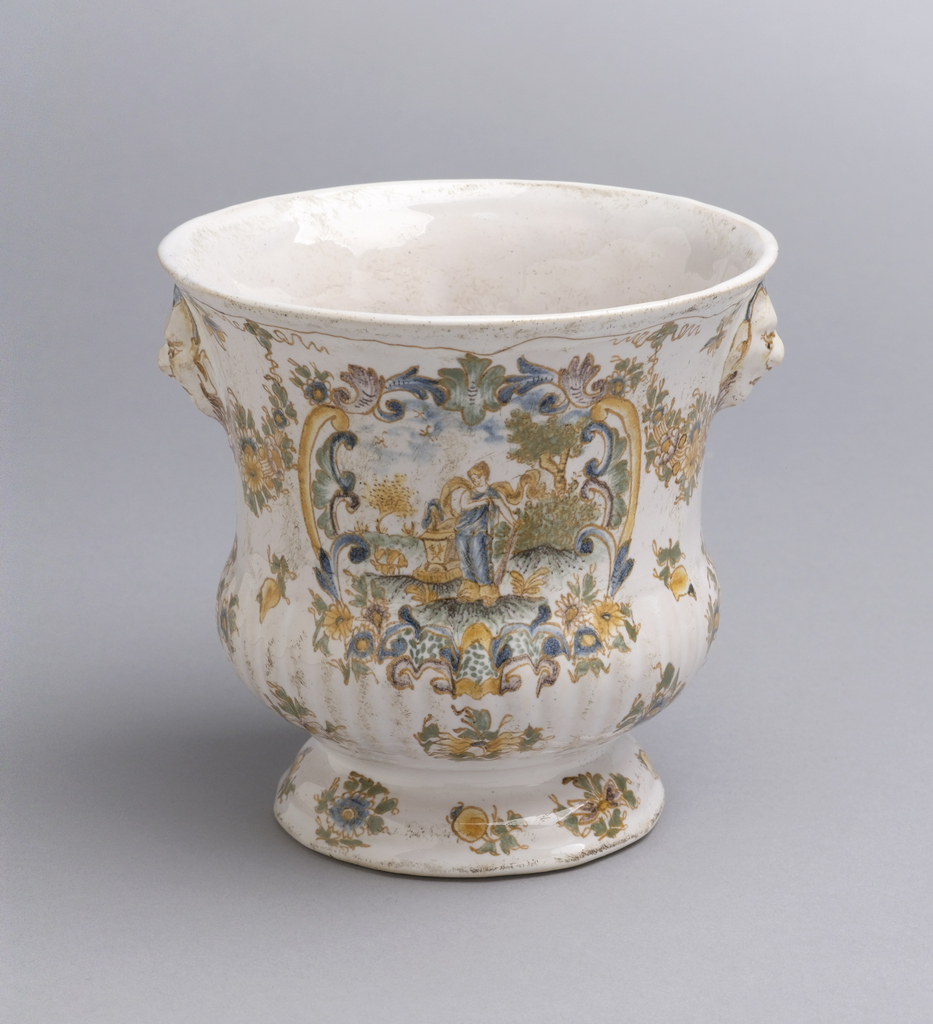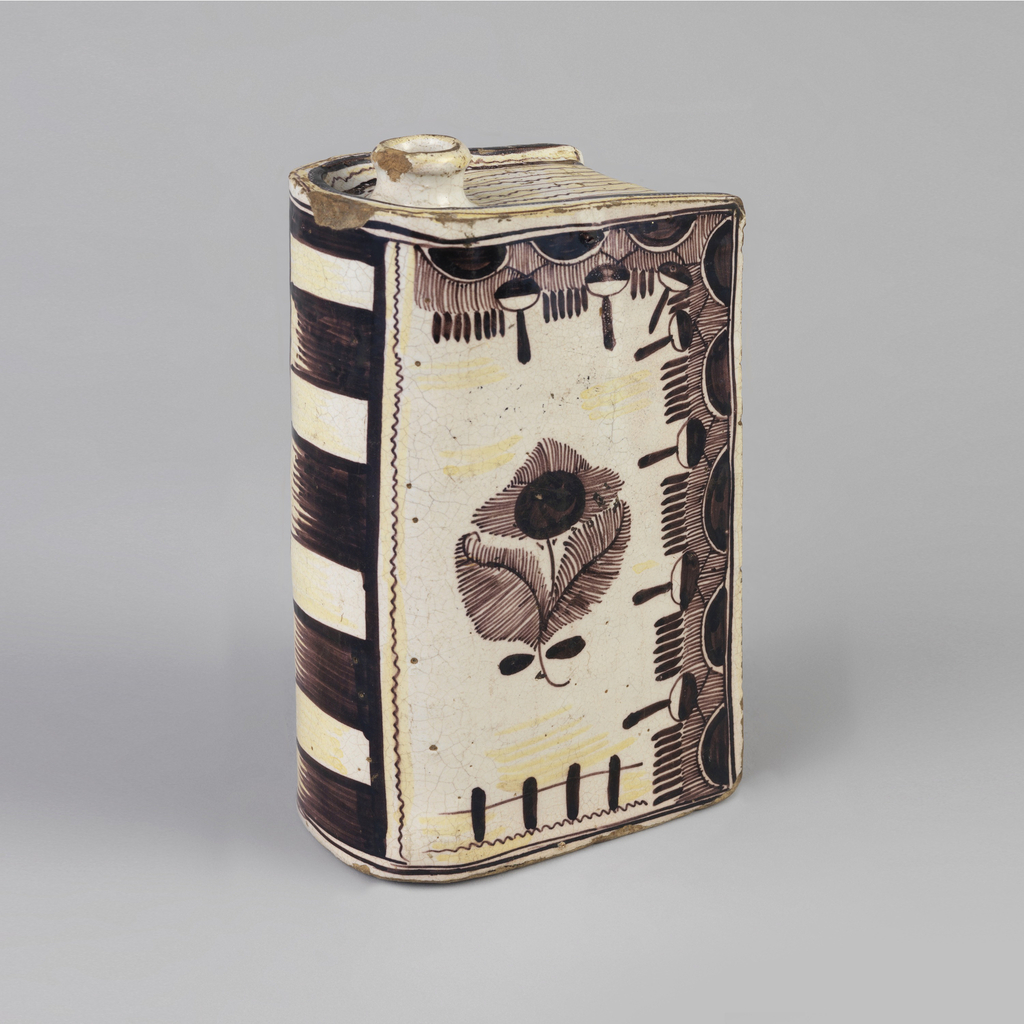This Dutch glazed earthenware clock, manufactured in 1910 by the Arnhem Faience Factory exemplifies the Art Nouveau style, or Nieuwe Kunst as it was called in the Netherlands, prevalent in that country from about 1892 to 1910. Art Nouveau had origins in England and quickly gained popularity in France and the rest of Europe as...
This Jardinière was made of faïence, the French term for tin-glazed earthenware based on the name of a town in Italy-Faenza, with which its production is associated from the Middle ages and before. This example is from Moustiers, France, a town in the Alpine area in the southeast of France, where faïence has been made...
In celebration of Women’s History Month, Cooper Hewitt is dedicating select Object of the Day entries to works that celebrate women in our collection. We believe that this Italian Amorino Plate (also known as a coppa) dates from ca. 1600. The cupid (or putto) painted in the center of the plate, which is a shallow bowl,...
A ghostly skeleton in a shroud, with one arm upraised, holding a burning lamp, over a dusky, shadowy background…. Are you scared yet? You need not be, for this ghoulish scene unfolds on this enchanting Rookwood Pottery jug, and not on your street. The ovoid jug was made in 1891 and is part of the...
This flask is not the kind you use to sneak liquor into your family get-togethers. At 7.5 inches tall, this Swiss flask is much larger than the flask you might be used to, and it is earthenware. This glazed ceramic object from the eighteenth century mimics a book. The attention to detail is especially apparent...




